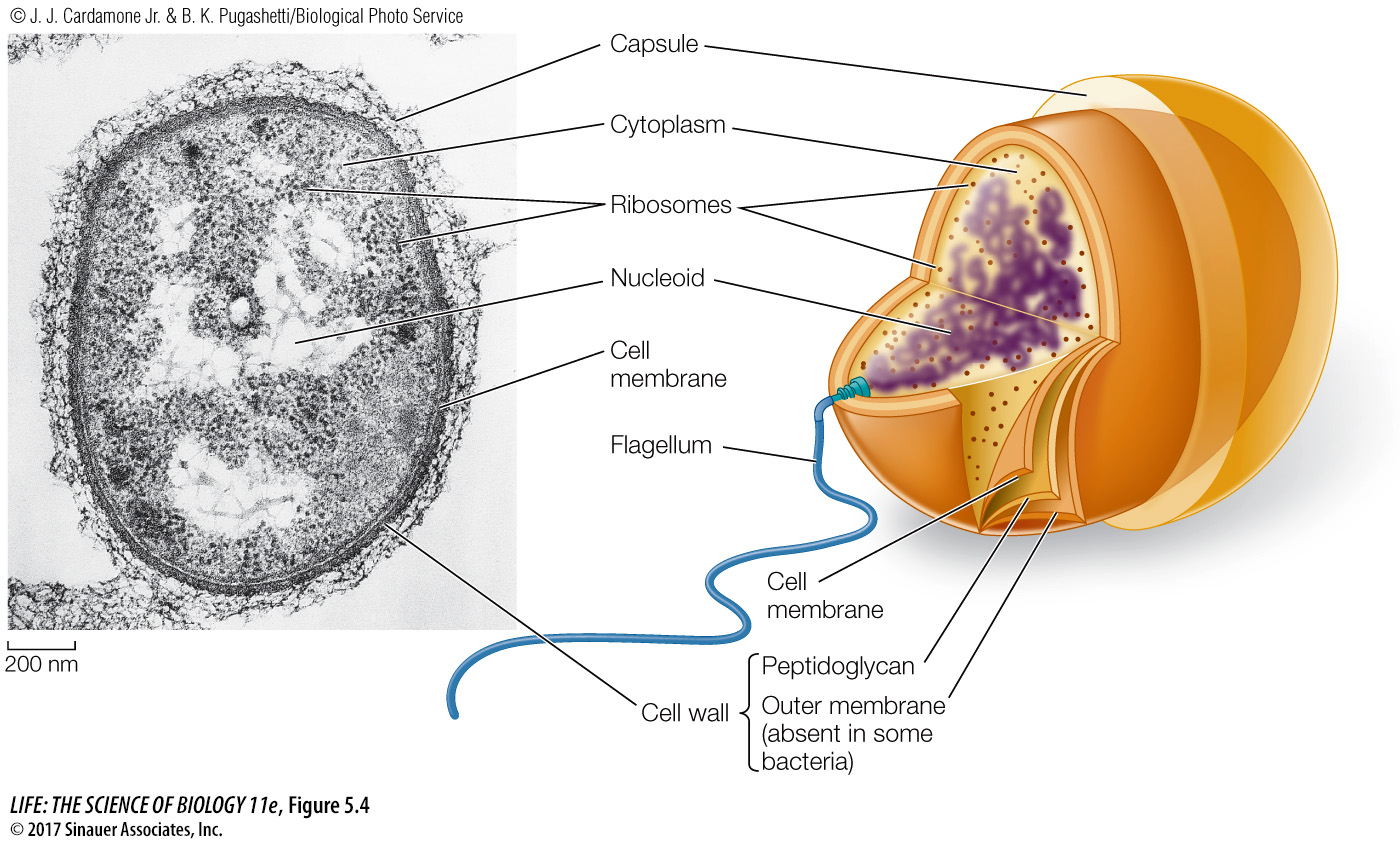What are the features of prokaryotic cells?
All *prokaryotic cells have the same basic structure (Figure 5.4):
The cell membrane encloses the cell, regulating the traffic of materials into and out of the cell, and separating its interior from the external environment.
The nucleoid is a region in the cell where the DNA is located. As we described in Key Concept 4.1, DNA is the hereditary material that controls cell growth, maintenance, and reproduction.
The rest of the material enclosed in the cell membrane is called the cytoplasm (cytosol).
Ribosomes are complexes of RNA and proteins in the cytoplasm that are about 25 nanometers (nm) in diameter. They can be visualized only with the electron microscope. They are the sites of protein synthesis, where information coded for in nucleic acids directs the sequential linking of amino acids to form proteins.
*connect the concepts In terms of sheer numbers, prokaryotes are the most successful organisms on Earth. As we examine prokaryotic cells in this section, bear in mind that there are vast numbers of prokaryotic species, and that bacteria and archaea are distinguished in numerous ways. These differences, and the vast diversity of organisms in these two domains, will be the subject of Chapter 26.

The cytoplasm is not static. Rather, the substances in this environment are in constant motion. For example, a typical protein moves around the entire cell within a minute, and it collides with many other molecules along the way. This motion helps ensure that biochemical reactions proceed at rates sufficient to meet the needs of the cell. Although they are structurally less complex than eukaryotic cells, prokaryotic cells are functionally complex, carrying out thousands of biochemical reactions.